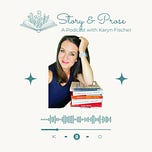Over the weekend my husband and I took the kids to see the new Inside Out movie. And, as expected given it’s Pixar and a movie about emotions, it gave us all the feels.
Pixar is a powerhouse of storytelling, and not just because they are filmmakers and are working with a more visual medium.
Over and over again, their stories win the hearts and minds of millions of young and the young at heart. As a story student and teacher, and a writer, I found myself asking how. What about this movie—and so many of their others—bring us to tears?
You could argue that all the magic is explained in these, Pixar’s 22 Rules for Storytelling, but I want to zoom out for a second and look at their finished products, starting with Inside Out because it’s fresh in my mind. The four things I think make Pixar flicks so moving are: They go deep; their characters are flawed and lovable; their worlds are vivid, detailed, and organic; and they perfectly marry the inside and outside worlds.
1. They go deep
From Toy Story to Up to WALL-E to Elemental and Inside Out, these writers are unabashedly afraid at looking at the tough parts of life:
The loneliness in WALL-E…
The weight of a family’s expectations in Elemental…
The fear of being replaced or forgotten in Toy Story…
Grief in Up…
And belonging and fear in Inside Out…
Each of these stories digs so deep into the darker—or rather, harder--parts of the human experiences. Though they balance it all out with fun characters and humor, there is, at the heart of each of these movies, something profound and meaningful and relatable. And many of the stories aren’t even driven by human characters! They’re toys or elements, or emotions, or robots, or fish (Finding Nemo). And yet they feel like they are humans. They know what it means to feel like they’re letting someone down, they know what it means to love, to be lonely, to fear change and the unknown.
The first Inside Out movie dealt with a young pre-teen who had to deal with the pain of moving across the country, and in the second, she had to deal with the pressures of securing her place on her new hockey team while anxiety crippled her. Pixar movies aren’t always easy, but they are true. They are real. They say something meaningful about life and how to deal with the tough stuff.
2. Their characters are flawed & lovable
In the first Inside Out, the main character, I’d argue is Joy, one of the emotions controlling young human girl Riley. Joy is her name and it’s also her responsibility. She’s mostly in control of Riley, flooding her with happiness and optimism, and generally, positivity. Joy is brave and fights fiercely for Riley’s happiness.
But she’s also flawed. She doesn’t much like—or understand, really—the purpose her colleague/fellow emotion, Sadness serves. Fear keeps Riley safe, Disgust keeps Riley from getting poisoned, and Anger fires her up. But Sadess’s job, Joy says, she’s not really sure what it is.
So on her journey of saving Riley from making a horrible decision as she faces the extreme emotions coming with this cross-country move, Joy’s own journey is overcoming her flaw of thinking that joy is the only experience that Riley needs to be happy. Sadness, it turns out, does serve a purpose.
Or Woody, for example, Toy Story’s brave and lovable cowboy toy, is a fantastic leader…until his jealous side comes out and he makes poor choices when galactic space ranger super toy Buzz Lightyear lands in his kid’s room. Then he must learn what matters isn’t his own place in his kid’s heart, but his kid’s happiness at all.
Carl, from Up is curmudgeonly. He’s stuck in a vicious grief loop after losing his life-long love, Ellie. That is, until his journey to Paradise Falls, in which a sweet, bumbling kid and a sweet, derpy dog, start to soften his heart and teach him that there’s more life ahead and that the past isn’t everything.
But the thing is, we love them because of how they overcome their flaws. We love them because of their goodness and their less-good-ness. We love them for their strengths and their weaknesses. (And we love the movies for the always-comical and lovable cast of side characters.)
3. Vivid, detailed, organic worlds
I could write an entire article about this one alone (which I just might do one day!). That’s because I think it is one of the reasons Pixar movies are so beloved. Because they bring to life—in vivid detail—exciting, fascinating, and new worlds. Even the movies that take place in the human world—hello Up—take us to whimsical, half-magic places with the unexpected.
Inside Out (2) is a great example of their world-building, which is tightly bound to everything.
The creators at Pixar sat down, and went deep inside the mind, cracking it open to figure out how it might work—there are the memories, the core memories, answers for long-term and short-term memory, islands that make up Riley’s personality, there’s a “stream” of consciousness, a dream production studio, and, of course, the team of emotions that control Riley’s actions. And a million other things that I’m forgetting.
But here’s the thing: all of their worlds are governed by strict rules. Look at Toy Story, for example. They are toys, and no matter what tense moment is happening between them, the second Andy or Bonnie or any human comes in, they drop in their place, still as statues. Or, because of their own attributes, (size, gizmos and gadgets, etc.) each character is limited by what they can and cannot do.
Rules in world-building help make the world feel more organic, while also setting up obstacles and stakes for your characters.
Zooming back to Inside Out, there’s a scene in the first movie, shortly after Joy and Sadness find themselves out of headquarters, Anger, Disgust, and Fear are the only emotions left controlling Riley. They encourage each other to try to be like Joy—in other words, make Riley react like her normal, happy self. It doesn’t go well because none of the other emotions can be Joy. Disgust can only act like disgust. Fear can only act like fear, Anger like anger. (You can also look at characterization from this same lens; organic characterization means being true to who the character is, what they would say, and what they would do.)
Vivid details are the other key to Pixar’s world-building. In Elemental, which is about beings made of the elements—fire, water, air, and earth—and what happens when fire being, Ember, begins to fall in love with water being Wade. But where the movie shines with world-building is in the unique details about the city in which they live. Ember, being in fire town, eats hot food, passes stores and restaurants with fiery names, burns bigger and brighter when she’s angry, etc. She can turn sand into beautiful glass objects. And a visit to Wade’s home shows a living room flooded in water, with his two nephews, Marco & Polo floating around somewhere. Wade, being water, can take all kinds of shapes, flow through drains and beneath fences, and is always crying.
In other words, the world is everywhere. It shapes the character and their experiences and their choices.
I’d like to think that the Pixar creators all got together, sat down, and brainstormed what it would be like to actually live in each of their worlds, and they just go hog wild. Like a Pinterest mom trying to design a themed birthday party or baby shower.
The details matter. And even if not every detail sticks with readers, they add up to the sum of the whole.
4. They perfectly marry the inside and outside worlds.
Inside Out (2) is the perfect example of what it means to marry the character’s internal and external worlds to create a powerful story.
Throughout both movies, we watch how Riley’s internal world shapes and dictates her external world. When she’s feeling angry (when Anger is controlling the emotion console), she behaves differently than when she’s feeling scared. And in the whole second movie, we see what happens when Anxiety moves into Riley come puberty—telling Riley lies, and forcing her to make terrible decisions as she tries to “keep Riley safe from the things she can’t see” (e.g. the things that could someday come to pass).
And, of course, when the character’s internal/emotional world is spinning out of control—when they’re making poor decisions based on flawed logic—what happens to the external world? It begins to spin out of control too. Riley decides to do out of character things, like sneak into her coach’s locked office, or turn her back on her loyal best friends.
And vice versa…when external events in Riley’s world take a turn for the worse, her internal world begins to fall apart (we see things physically crumbling, etc.).
Meanwhile, the other protagonist, Joy, also learns a lesson and changes because of what she’s facing in her external world. As the infrastructure crumbles around her and she tries to get back to Riley’s control center so she can help her, Joy must face her own flaws and misbeliefs about what it means to only be positive and forget all the rest of the less-fun emotions. Because she’s in a position that forces her to look at things—including her co-emotions—in a different light.
That’s how story works.
It’s the marriage of the internal and the external worlds that change a character and that make for an exciting, interesting, and propulsive plot.
If you’ve been with me for awhile, y’all know I love breaking apart movies and analyzing them because I think it’s a great way to learn how to write better stories. And the people at Pixar are masters.
They take us places. They make us feel. They reflect our best and worst selves back at us. And, dear writer, this is what we should all be striving for. So get out there and make people laugh and ugly cry and fill them with rage and love and longing. All the things.
We’ll all be better with better art.
Want More?
Small Group Revision Confidence Workshop
Only a few spots left!
It's your last week to join the workshop, which starts next week. Here's how it will go: A small group of up to six writers will meet weekly for about 12 weeks--and work through a manuscript revision. I'll meet with everyone for about an hour and, for half of it, teach a revision concept (such as character, desire, stakes, genre conventions, interiority, story structure, voice/narrative distance, setting, as well as the actual logistics of revision--what to tackle first and how, redrafting vs. editing the written page etc.) and the other half of the meeting will be coaching/help with specific questions about your particular story.
Then there will be homework as you put into practice some of the concepts taught. So the focus will primarily be about helping you learn how to properly assess and fix issues in your manuscript, as well as keeping you accountable...forcing you to sit down and do the work week-by-week. In fact, I plan to go through the process along with the group as I revise my own WIP.
Tentative Schedule 6/25-9/22, Tuesdays 9/9:30-10/10:30 am PT
Cost: $170 per month for 3 months, with an option to upgrade to receive direct feedback.
Click the link below to get all the details and reserve your spot.
Karyn













How to make your book give readers all the feels